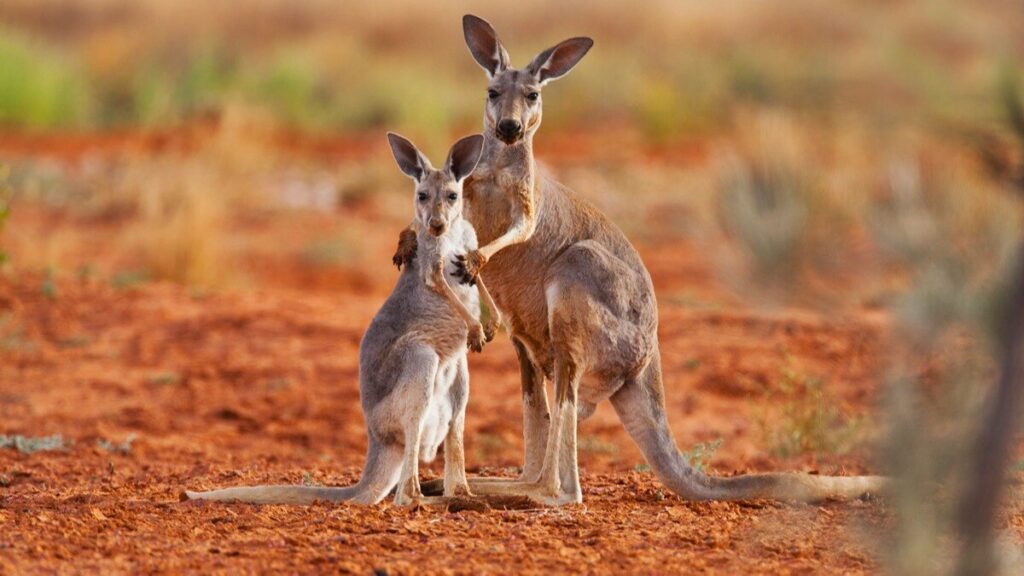Kangaroos are iconic symbols of Australia
Our mission is to inspire a maplifelonglove of learning with a focus on scholarship. For 23 years of existence,Ed hasmore.
Kangaroos are iconic symbols of Australia, widely recognized around the world. Here is some detailed information about kangaroos in Australia:
Types of Kangaroos
There are four main species of kangaroos in Australia:
Red Kangaroo (Macropus rufus)
- The largest of all kangaroo species and the largest terrestrial mammal native to Australia.
- Males can stand over 1.8 meters tall and weigh up to 90 kilograms.
- They are found across most of Australia, particularly in arid and semi-arid regions.
Eastern Grey Kangaroo (Macropus giganteus)
- Commonly found in the eastern and southern parts of Australia.
- They prefer open grasslands, forests, and woodlands.
- Males can weigh up to 66 kilograms and stand about 1.5 meters tall.
Western Grey Kangaroo (Macropus fuliginosus)
- Similar in size to the Eastern Grey, but found in the southern and western parts of Australia.
- Known for their distinctive coloring and smaller range compared to other species.
Antilopine Kangaroo (Macropus antilopinus)
- Found in the northern tropical regions of Australia.
- They inhabit open woodlands and grasslands and are less commonly seen than the other species.
Habitat and Distribution
Kangaroos are widely distributed across Australia, from the coastal regions to the arid interior. They adapt to a range of environments including:
- Grasslands
- Savannas
- Woodlands
- Forests
- Deserts
Behavior and Diet
- Diet: Kangaroos are herbivores and primarily graze on grasses, leaves, and shrubs. Their diet can vary depending on the availability of food sources in their habitat.
- Social Structure: They are social animals and typically live in groups called mobs, which can range from a few individuals to several dozen.
- Reproduction: Female kangaroos have a unique reproductive system allowing them to pause the development of an embryo until environmental conditions are favorable. They typically give birth to a single joey, which remains in the pouch for about six months.
Ecological Importance
Kangaroos play a significant role in their ecosystems:
- Grazing Habits: Their grazing helps maintain the balance of plant species and promotes the growth of certain grasses.
- Seed Dispersal: By feeding on a variety of plants, kangaroos aid in seed dispersal, contributing to plant biodiversity.
- Prey Species: They are a crucial part of the food chain, serving as prey for larger predators like dingoes and eagles.
Cultural Significance
Kangaroos hold a special place in Australian culture and are featured prominently in Aboriginal art and mythology. They are also national symbols, appearing on the Australian coat of arms, currency, and used by various organizations and brands to represent Australia.
Conservation Status
While most kangaroo species are not currently endangered, they face threats from habitat loss, climate change, and hunting. Conservation efforts include habitat protection, sustainable management practices, and research into their ecology and behavior.
Interesting Facts
- Kangaroos can hop at speeds of up to 60 km/h (37 mph) and cover large distances in search of food and water.
- They use their strong tails for balance and support while hopping and standing.
- Kangaroos are known for their powerful hind legs, which they use for defense by kicking potential predators.
Kangaroos are an integral part of Australia’s natural heritage and continue to fascinate people around the world with their unique adaptations and behaviors.

